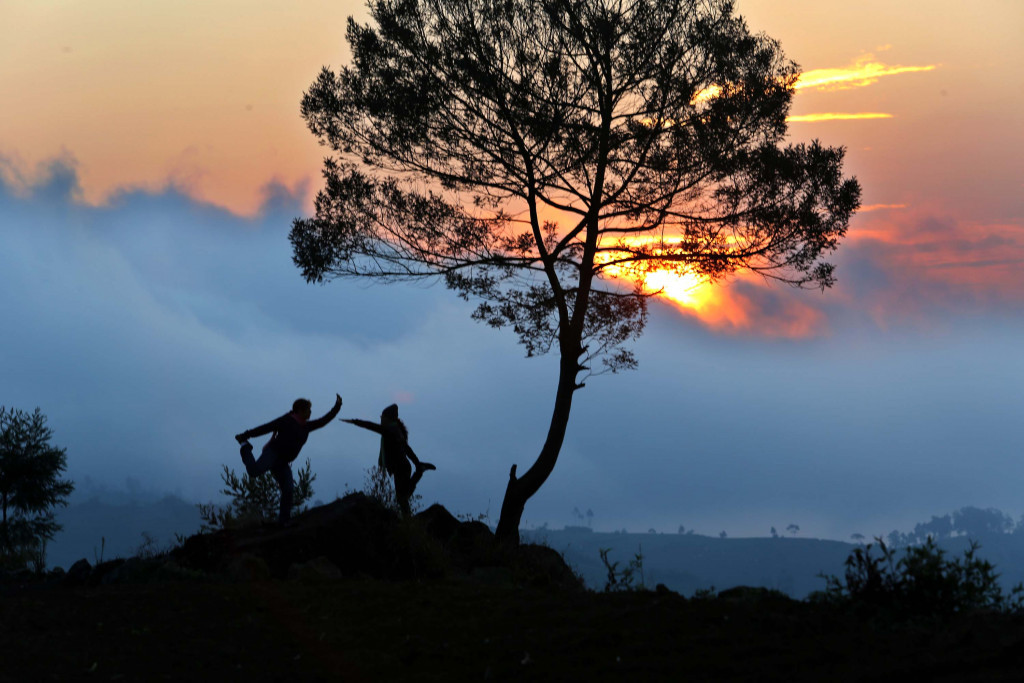Popular Reads
Top Results
Can't find what you're looking for?
View all search resultsPopular Reads
Top Results
Can't find what you're looking for?
View all search results‘Dharma Pātañjala’: a compelling look at yoga practices in ancient Bali
Dharma Pātañjala, a new book by French researcher Andrea Acri, reveals that Balinese and Javanese people in the olden days took yoga very seriously. Yoga was an inseparable part of their love life and their preparation for death.
Change text size
Gift Premium Articles
to Anyone
D
harma Pātañjala, a new book by French researcher Andrea Acri, reveals that Balinese and Javanese people in former days took yoga very seriously. Yoga was an inseparable part of their love life and their preparation for death.
What comes to your mind when you hear the word yoga? Many may answer that it is a physical activity utilizing postures with esoteric names.
However, not many realize that the yoga practices in ancient Bali and Java and those many modern-day people practice on a Sunday morning class are radically different, at least in spirit.
“This is the main difference: there’s no context to it,” said Andrea Acri, an assistant professor of Tantric Studies at l'École Pratique des Hautes Études, Paris.
“Back then, before you practiced the asana [body posture], you must follow the yamas [code of social conduct] and niyamas [self-observances],” he explained.
Acri recently visited the Institut Français d'Indonésie (IFI) in Jakarta to give a lecture on yoga practices in ancient India and Indonesia following the launch of his latest book, Dharma Pātañjala.
The book is based on his doctoral thesis on the scriptures on śaiva – one of the major Hindu traditions – written during the pre-Islamic era in Indonesia.
While ancient texts are often incomplete and prone to various interpretations, the text helped Acri to get a compelling glimpse into yoga practices in the archipelago.
While rising religious conservatism has arguably led to repressed sexuality in the present-day Indonesia, ancient texts show that Javanese and Balinese people back then cherished sex as their way of reaching spiritual enlightenment.
Lovemaking, as stipulated in old Javanese tutur (codes), is a religious practice “in which sexual climax and pleasure are central”.
“In the past, the people saw that sexual relations between man and woman could lead to a very high state of consciousness, to achieve moksha [emancipation],” Acri said.
“It is lovemaking mixed with meditating,” he summed up, adding that the practice was less significant in India despite the presence of Kamasutra.
It was also yoga that accompanied Balinese people when they were approaching their final days on earth.
The yoga of dying is built on the belief that the soul will leave the body when the body cannot sustain itself any longer. The yoga comes into the picture as a way to prepare one’s self before finally leaving the mortal realm.
“So it is important for you to carry out yourself; you accompany your death rather than just dying. This is a practice that comes from India, but in Bali and pre-modern Java it seems to be much more important,” Acri said, noting the ubiquity of the practice in local texts.
Yoga of sound also had a significant presence in ancient Bali. Back then, yoga practitioners concentrated on humming 10 sacred daśākșara (syllables), including “sa”, “ba”, “ta”, “a”, “i” – representing the first letters of Shiva’s five characters: Sadyojata, Vamadeva, Tatpurusha, Aghora and Ishana.
Acri says that the syllables were a way to conceptualize the cosmos and to visualize the creation of fire and water.
“The practitioner sits down and imagines the fire coming up from the muladhara [the body center] and the water coming from above to create smoke [...] It symbolizes body purification,” he said.
Acri acknowledges that many people today seek wellness and comfort as their main objectives when practicing yoga. Such practice is a world away from ancient India’s Hatha yoga, which includes extreme activities like standing still for one full day.
“In Hatha Yoga, we have ascetic yogis who practice tapas, which means ‘fire’ or ‘undergo penance’. This practice is meant to humble one’s self, to make the body stronger through pain,” he said.
Acri attributed the distinct practices to the evolving spirituality concept. Some yoga practitioners today, as he noted, want to disassociate themselves from the notions of God for different reasons.
“[Yoga practitioners today] may have their own concepts of spirituality […] They tend to veer into the New Age concepts such as having a peaceful mind. They might not have the concept of God, or manunggal [becoming one with] God.”
“But this theistic dimension was of utmost importance,” he concluded.











